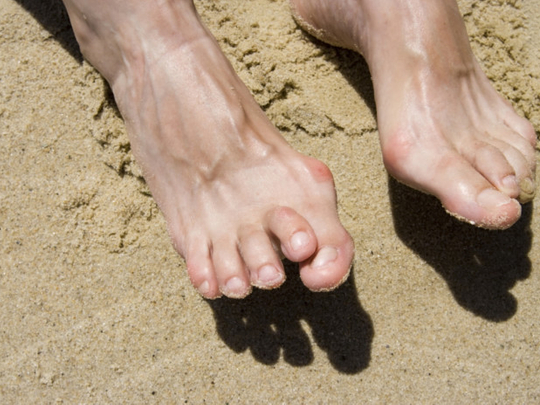
Q: Is there anything you can do for a hammertoe?
A: The abnormal bending of the toe known as hammertoe can become increasingly uncomfortable as the toe curls under and becomes stiff and rigid over time. A corn, or thickened layer of skin, often develops as the elevated part of the toe rubs against one’s shoes and can become inflamed or infected.
“Patients may come in and ask, ‘Can you remove the corn?’ But it’s not really a skin problem - it’s a bone problem. The contracture has to be removed surgically,” said Jacqueline Sutera, a doctor of podiatric medicine and surgery and spokeswoman for the American Podiatric Medical Association. “Once you have it, the bad news is, it doesn’t just go away.”
Some people have a genetic predisposition toward developing a hammertoe or may have one from birth. Others develop a hammertoe after an injury. But wearing tight shoes, hand-me-down shoes or narrow or pointy shoes encourages development of the condition, especially if there is a genetic predisposition.
Hammertoes are also often accompanied by bunions, bony bumps that form at the base of the big toe and crowd the toes even more within the shoe, exacerbating the situation.
Hammertoe may be manageable if you wear shoes with a wide toe box, make sure to wear the right size shoe and select shoes appropriate for whatever activity you’re engaging in. But the condition can be reversed by a quick surgical procedure “that takes only 15 minutes from start to finish,” said Sutera.
Surgery removes the corn and a small portion of the knuckle that is contracted, Sutera explained, so the toe can relax. But she said the condition can recur, “especially if a person goes back to wearing high-heeled pointy-shaped shoes.”
Though surgery can fix the problem, Sutera cautioned against rushing into the operating room, suggesting patients consider surgery only if they are “miserable” and unable to find shoes that accommodate their feet; if the hammertoe limits their physical activity and prevents them from walking or exercising; or if, after changing shoes and trying anti-inflammatory medications, “you’re constantly in pain.”
She warned against using medicated corn remover pads and over-the-counter acid products to remove the corns, saying such remedies can be dangerous, especially if the corn is infected or the patient has diabetes or poor circulation. “We do not recommend those,” she said. “If it’s bothering you, see your foot doctor.”
— New York Times News Service













